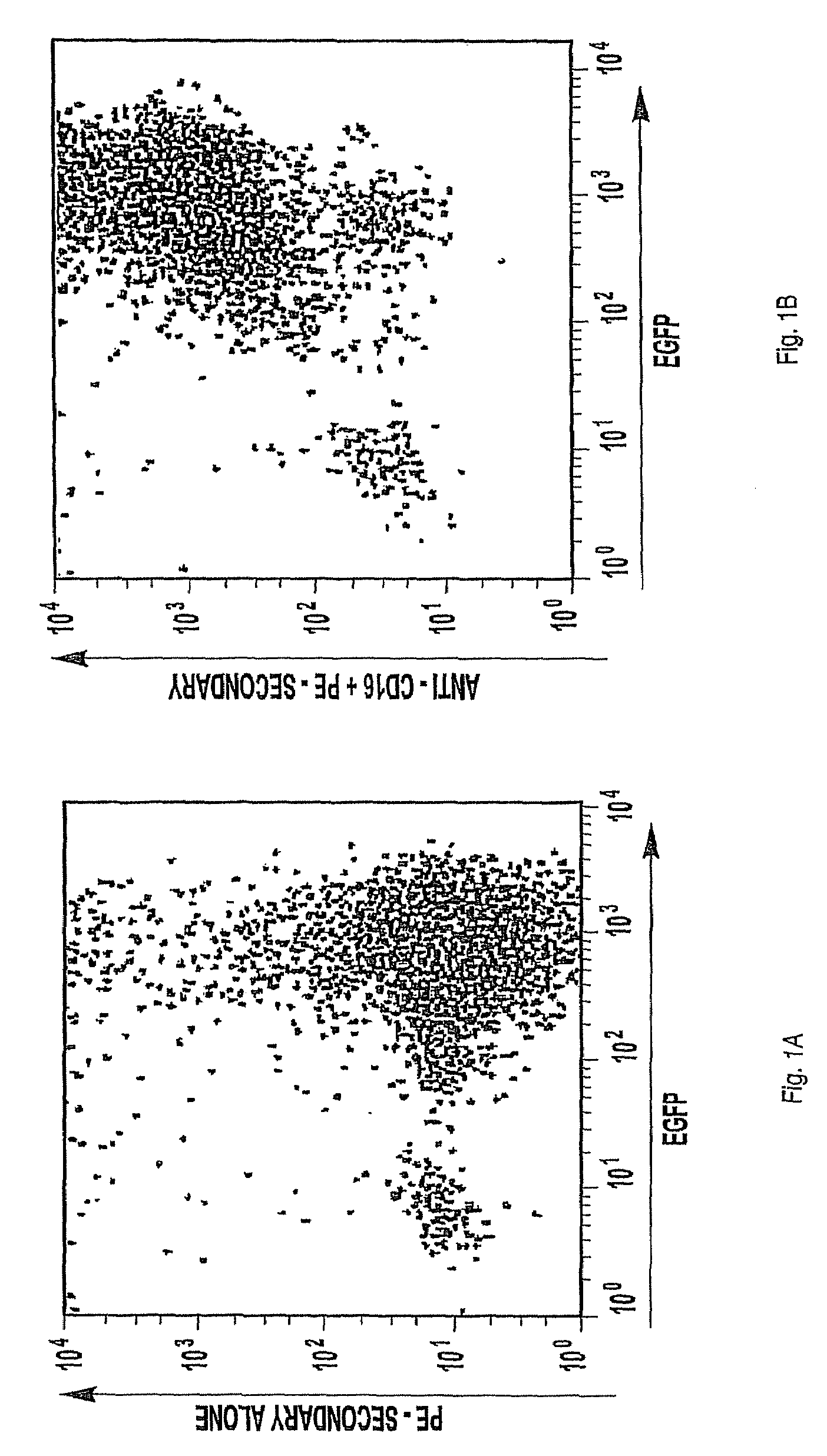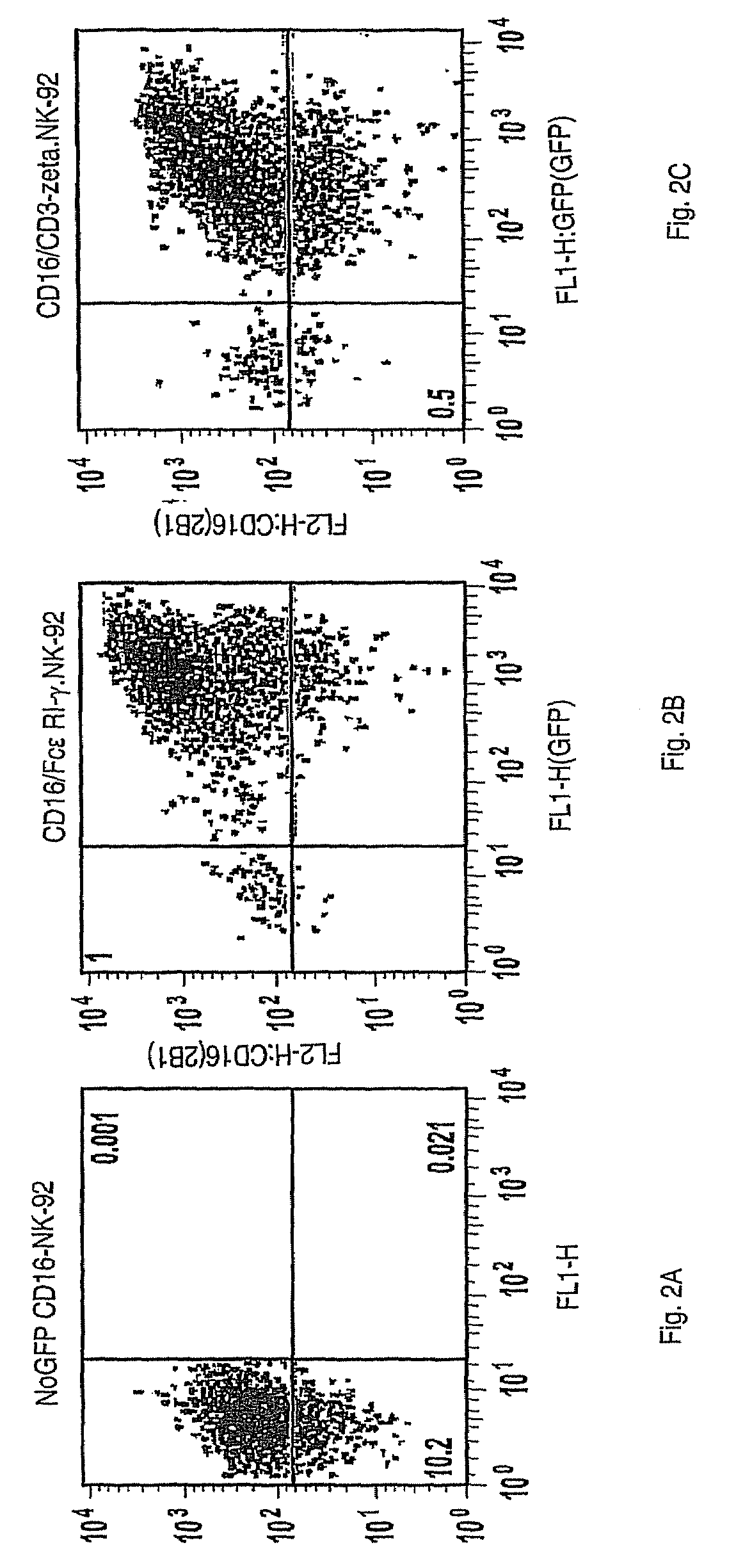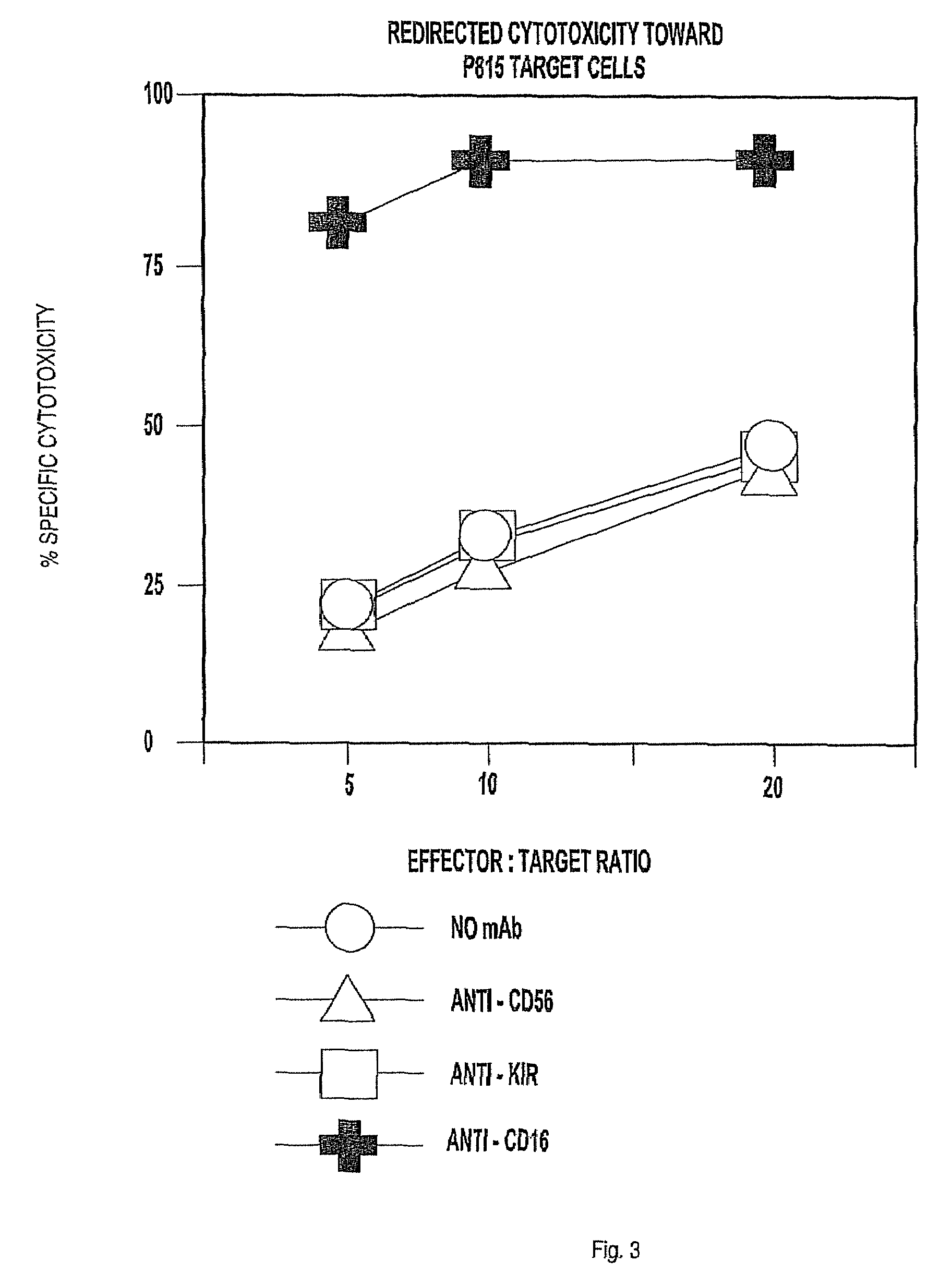Genetically modified human natural killer cell lines
a technology of natural killer cells and genetic modification, applied in the field of genetically modified human natural killer cells, can solve the problems of complex quality control of these cells, high cost of preparation of autologous nk cells, and deficiency of proliferative ability and/or cytotoxic activity of cells
- Summary
- Abstract
- Description
- Claims
- Application Information
AI Technical Summary
Benefits of technology
Problems solved by technology
Method used
Image
Examples
example 1
CD16 Recombinant Retrovirus Preparation
[0140]CD16 cDNA X52645.1 encoding the low affinity form of the transmembrane immunoglobulin γ Fc region receptor III-A (FcγRIII-A or CD16) [Phenylalanine-157 (F157), complete sequence: SwissProt P08637 (SEQ ID NO:1)] or a polymorphic variant encoding a higher affinity form of the CD16 receptor [Valine-157 (F157V), complete sequence: SwissProt VAR—008801 (SEQ ID NO:2)] was sub-cloned into the bi-cistronic retroviral expression vector, pBMN-IRES-EGFP (obtained from G. Nolan, Stanford University, Stanford, Calif.) using the BamHI and NotI restriction sites in accordance with standard methods.
[0141]The recombinant vector was mixed with 10 μL of PLUS™ Reagent (Invitrogen; Carlsbad, Calif.); diluted to 100 μL with pre-warmed, serum-free Opti-MEM® (Invitrogen; MEM, minimum essential media); further diluted by the addition of 8 μL Lipofectamine™ (Invitrogen) in 100 μL pre-warmed serum-free Opti-MEM®; and incubated at room temperature for 15 minutes. Th...
example 2
Retroviral Transduction of CD16 into NK-92 Cells
[0143]NK-92 cells cultured in A-MEM (Sigma; St. Louis, Mo.) supplemented with 12.5% FBS, 12.5% fetal horse serum (FHS) and 500 IU rhIL-2 / mL (Chiron; Emeryville, Calif.) were collected by centrifugation at 1300 rpm for 5 minutes, and the cell pellet was re-suspended in 10 mL serum-free Opti-MEM® medium. An aliquot of cell suspension containing 5×104 cells was sedimented at 1300 rpm for 5 minutes; the cell pellet re-suspended in 2 mL of the retrovirus suspension described in Example 1, and the cells plated into 12-well culture plates. The plates were centrifuged at 1800 rpm for 30 minutes and incubated at 37° C. under an atmosphere of 7% CO2 / balance air for 3 hours. This cycle of centrifugation and incubation was then repeated a second time. The cells were diluted with 8 mL of α-MEM, transferred to a T-25 flask, and incubated at 37° C. under a 7% CO2 / balance air until the cells were confluent. The transduced cells were collected, re-susp...
example 3
NK-92-CD16 Cells Co-Expressing CD16 and an Accessory Signaling Protein FcεRI-γ or TCR-ζ
[0145]Recombinant retroviruses incorporating inserted genes for the expression of either accessory signaling proteins, FcεRI-γ (SEQ ID NO:5) or TCR-ζ (SEQ ID NO:7), were prepared by using standard methods to ligate the corresponding cDNA into the pBMN-IRES-EGFP vector and transfecting this construct into the Phoenix-Amphotropic packaging cell line in the presence of Lipofectamine™ Plus as described in Example 1. The resulting γ or ζ recombinant retroviruses were used to transduce NK-92 cells as described in Example 2 with the following further modifications.
[0146]NK-92 cells transduced with FcεRI-γ polynucleotide (SEQ ID NO:4) or TCR-ζ (SEQ ID NO:6) were collected, re-suspended in serum-free Opti-MEM® medium and sorted on the basis of their level of the co-expressed EGFP using a FACS, CD16 cDNA was ligated into a version of the pBMN vector lacking the IRES and EGFP sequences, called pBMN-NoGFP (Yu...
PUM
 Login to View More
Login to View More Abstract
Description
Claims
Application Information
 Login to View More
Login to View More - R&D
- Intellectual Property
- Life Sciences
- Materials
- Tech Scout
- Unparalleled Data Quality
- Higher Quality Content
- 60% Fewer Hallucinations
Browse by: Latest US Patents, China's latest patents, Technical Efficacy Thesaurus, Application Domain, Technology Topic, Popular Technical Reports.
© 2025 PatSnap. All rights reserved.Legal|Privacy policy|Modern Slavery Act Transparency Statement|Sitemap|About US| Contact US: help@patsnap.com



